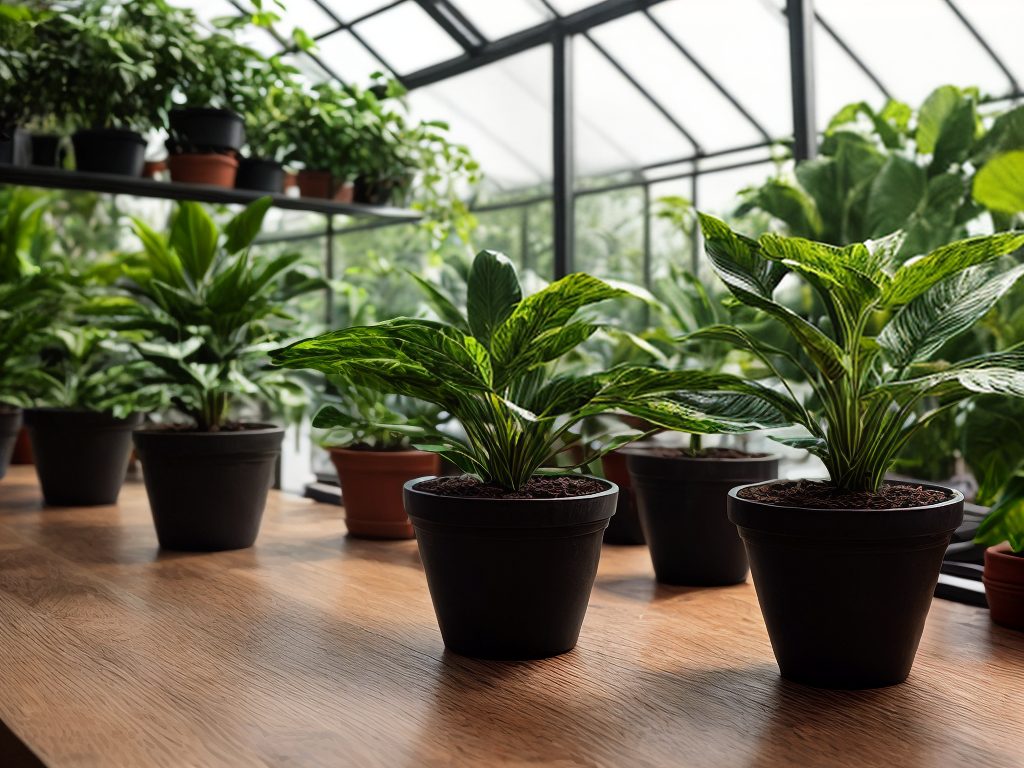
Are you looking for products that align with your values and contribute to a sustainable future? Look no further than Live Good Products, where eco-friendly practices and sustainability are at the forefront. With a commitment to reducing environmental impact, Live Good Products offers a range of goods that not only benefit you but also the planet we call home. From the inspiration behind their creations to the materials used in production, every aspect of Live Good Products is carefully considered to ensure a positive impact. By choosing Live Good Products, you are joining a community of like-minded individuals who strive for a better, more sustainable world. Together, we can make a difference.
Key Takeaways
- Live Good products are designed with a meticulous process to ensure sustainability, drawing inspiration from nature’s efficiency and resourcefulness.
- The company prioritizes eco-friendly sourcing and incorporates recycled materials to reduce the demand for new resources, while also using low-impact dyes to minimize their environmental footprint.
- Live Good adopts a circular design approach, making their products easily recyclable or biodegradable, and collaborates with suppliers who share their values in prioritizing sustainability.
- The company’s commitment to environmental sustainability extends beyond its products, as it also focuses on using biodegradable and recyclable packaging materials, as well as promoting fair trade certification for ethical manufacturing and worker rights.
The Inspiration Behind Live Good Products
The inspiration behind Live Good Products lies in the desire to create environmentally friendly goods that promote sustainable living. The company’s founders were motivated by the urgent need to address the environmental challenges we face today. They recognized that traditional manufacturing processes contribute to pollution and resource depletion, and they wanted to make a positive difference. To achieve this, Live Good Products looked to various sources for inspiration.
One of the key sources of inspiration was nature itself. The founders observed how ecosystems function in harmony, with everything interconnected and sustainable. They drew inspiration from the efficiency and resourcefulness of nature, aiming to incorporate these principles into their design process.
Another source of inspiration was the growing awareness of environmental issues among the general public. They noticed a shift in consumer preferences towards eco-friendly products and a desire for more sustainable options. This provided the motivation to develop goods that not only meet the needs of today’s consumers but also contribute to a healthier planet.
Through a meticulous design process, Live Good Products ensures that every aspect of their goods promotes sustainability. From the selection of materials to the manufacturing process, every decision is made with the environment in mind. They collaborate with suppliers who share their values, using recycled materials whenever possible and reducing waste in their production line.
Materials: From Sustainable Sourcing to Production
To ensure the sustainability of Live Good Products, you must carefully consider the materials used in sourcing and production. By prioritizing eco-friendly sourcing and sustainable production methods, Live Good Products can reduce their environmental impact and promote a more responsible approach to manufacturing. Here are four key factors to consider when it comes to materials:
- Eco-friendly sourcing: Live Good Products should prioritize materials that are sourced from renewable resources and have minimal negative impact on the environment. This can include using organic cotton, bamboo, or hemp, which require fewer pesticides and water compared to conventional cotton.
- Recycled materials: Incorporating recycled materials into the production process can significantly reduce the demand for new resources. Live Good Products can explore using recycled polyester or reclaimed fibers, providing a second life to materials that would otherwise end up in landfills.
- Low-impact dyes: Traditional textile dyes often contain harmful chemicals that can pollute waterways and harm ecosystems. By opting for low-impact dyes, Live Good Products can minimize their environmental footprint while still achieving vibrant and lasting colors.
- Circular design: Designing products with the end in mind is essential for sustainable production. Live Good Products can adopt a circular design approach, where materials are chosen and products are made with the intention of being easily recyclable or biodegradable.
Eco-Friendly Packaging: Reducing Waste and Environmental Impact
Minimize your environmental impact by adopting eco-friendly packaging practices for Live Good Products. Reducing waste and using sustainable packaging are crucial steps towards creating a more sustainable future. By making conscious choices about the materials and design of your packaging, you can significantly reduce your carbon footprint and contribute to a healthier planet.
To help you understand the impact of sustainable packaging, consider the following table:
| Packaging Material | Environmental Impact |
|---|---|
| Biodegradable | Minimal impact |
| Recyclable | Reduces waste |
| Compostable | Returns nutrients |
| Renewable | Reduces resource use |
| Minimalist | Reduces material use |
By using biodegradable packaging materials, you ensure that your packaging will break down naturally over time, minimizing its impact on the environment. Recyclable packaging can be reused or turned into new products, reducing waste and conserving resources. Compostable packaging can be composted, returning valuable nutrients to the soil. Choosing renewable packaging materials, such as bamboo or recycled paper, helps reduce the consumption of limited resources. Finally, adopting a minimalist approach to packaging can significantly reduce material use and waste generation.
Ethical Manufacturing: Fair Trade and Labor Practices
When it comes to ethical manufacturing, fair trade certification is an important aspect to consider. Fair trade certification ensures that workers involved in the production of goods are treated fairly and are not subjected to exploitative labor practices. This certification also guarantees that the workers receive fair wages and have safe working conditions. By supporting products with fair trade certification, you can contribute to the protection of worker rights and promote ethical labor practices in the industry.
Fair Trade Certification
Choose ethical manufacturing with Fair Trade Certification for sustainable and responsible labor practices. Fair Trade Certification ensures that products are sourced ethically and manufactured under fair labor conditions. Here are four reasons why Fair Trade Certification is important:
- Ethical sourcing: Fair Trade Certification guarantees that products are sourced from producers who follow ethical practices, such as paying fair wages and providing safe working conditions.
- Supply chain transparency: Fair Trade Certification requires transparency in the supply chain, ensuring that consumers have access to information about where and how products are made.
- Worker empowerment: Fair Trade Certification supports the empowerment of workers by providing fair wages, promoting gender equality, and fostering safe and healthy working environments.
- Environmental sustainability: Fair Trade Certification encourages sustainable production practices, minimizing the impact on the environment and promoting the use of renewable resources.
Worker Rights Protection
Ensure the protection of worker rights by actively supporting ethical manufacturing practices and Fair Trade Certification. By prioritizing worker health and fair wages, you contribute to a sustainable and socially responsible supply chain. Fair Trade Certification guarantees that workers are paid fair wages and are provided with safe and healthy working conditions. Let’s take a closer look at the benefits of ethical manufacturing and Fair Trade Certification:
| Benefits of Ethical Manufacturing and Fair Trade Certification |
|---|
| Worker Health |
| Fair Wages |
| Social Responsibility |
Energy Efficiency: Innovations in Production Processes
When it comes to energy efficiency in production processes, there are several innovations that can greatly contribute to sustainability. Renewable energy sources, such as solar or wind power, can be utilized to power manufacturing facilities, reducing reliance on fossil fuels. Streamlining manufacturing techniques, such as optimizing production lines and reducing waste, can also lead to significant energy savings. Furthermore, sourcing materials from eco-friendly suppliers who prioritize sustainable practices can further enhance the energy efficiency of production processes. By implementing these innovations, companies can not only reduce their carbon footprint but also save on energy costs in the long run.
Renewable Energy Sources
You can significantly reduce your environmental impact by incorporating renewable energy sources into your production processes. By adopting clean energy solutions, you not only contribute to a sustainable future but also benefit from cost savings in the long run. Here are four reasons why renewable energy alternatives are a smart choice for your business:
- Reduced carbon footprint: Renewable energy sources such as solar and wind power produce little to no greenhouse gas emissions, helping you minimize your carbon footprint and combat climate change.
- Lower energy costs: Investing in renewable energy can lead to significant savings on your energy bills over time. Once installed, solar panels and wind turbines provide a reliable and cost-effective source of electricity.
- Enhanced brand image: By aligning your business with sustainable practices, you appeal to eco-conscious consumers who value companies that prioritize environmental responsibility.
- Government incentives: Many governments offer incentives and tax breaks for businesses that adopt renewable energy, making it a financially attractive option.
Incorporating renewable energy sources into your production processes not only demonstrates your commitment to sustainability but also offers tangible benefits for your business.
Streamlined Manufacturing Techniques
By implementing streamlined manufacturing techniques, you can increase energy efficiency in your production processes, further reducing your environmental impact and promoting sustainability. Streamlined production methods are designed to optimize efficiency and minimize waste throughout the manufacturing process. This can be achieved through various strategies such as lean manufacturing, which focuses on eliminating unnecessary steps and reducing energy consumption. Sustainable manufacturing techniques also involve the use of advanced technologies and equipment that are energy-efficient and environmentally friendly. For example, investing in energy-efficient machinery and implementing smart manufacturing processes can significantly reduce energy consumption. By adopting these streamlined manufacturing techniques, you not only contribute to a greener future but also improve your bottom line by decreasing operational costs and increasing productivity. Embracing sustainable manufacturing practices is not only a responsible choice, but it also positions your company as a leader in the industry, attracting like-minded customers and stakeholders who value environmentally conscious practices.
Eco-Friendly Material Sourcing
To achieve energy efficiency in your production processes, start by sourcing eco-friendly materials that promote sustainability. By using eco-friendly material alternatives, you can reduce the environmental impact of your products and contribute to a more sustainable future. Here are four important considerations when sourcing materials for your production:
- Recycled materials: Look for suppliers that offer recycled materials, such as recycled plastic, paper, or textiles. These materials help reduce the demand for virgin resources and minimize waste.
- Organic and natural materials: Choose materials that are grown without the use of harmful chemicals or pesticides. Organic cotton, hemp, and bamboo are great options for textiles, while sustainably harvested wood can be used for furniture and packaging.
- Local sourcing: Opt for materials that are sourced locally whenever possible. This reduces transportation emissions and supports local economies.
- Sustainable supply chains: Partner with suppliers that prioritize sustainability throughout their supply chains. Look for certifications like Fairtrade, Forest Stewardship Council (FSC), or Global Organic Textile Standard (GOTS) to ensure ethical and responsible sourcing practices.
Carbon Footprint Reduction: Live Good Products’ Commitment to Sustainability
Live Good Products actively works towards reducing its carbon footprint through sustainable practices. The company recognizes the importance of minimizing its environmental impact and is committed to implementing strategies that contribute to a greener future. One of the ways Live Good Products achieves carbon footprint reduction is through carbon offsetting initiatives. By investing in projects that reduce or remove greenhouse gas emissions, the company is able to compensate for its own carbon emissions. This commitment to carbon offsetting ensures that Live Good Products is accountable for its environmental impact and actively seeks to mitigate it.
In addition to carbon offsetting, Live Good Products also focuses on establishing sustainable supply chains. The company carefully selects suppliers who share their commitment to sustainability. By working with partners who prioritize eco-friendly practices, Live Good Products ensures that its entire supply chain operates in an environmentally responsible manner. This includes sourcing materials from sustainable sources, minimizing waste, and reducing energy consumption throughout the production process.
Water Conservation: Sustainable Practices in Manufacturing
Reduce the water usage in your manufacturing process by implementing sustainable practices. By adopting water-saving techniques and sustainable irrigation methods, you can contribute to the conservation of this precious resource. Consider the following strategies to minimize water usage in your manufacturing operations:
- Implement water recycling systems: Install systems that can capture and treat water used in your manufacturing processes, allowing it to be reused. This reduces the need for fresh water intake and decreases overall water consumption.
- Optimize equipment efficiency: Regularly maintain and update your manufacturing equipment to ensure optimal efficiency and minimize water wastage. This includes fixing leaks, upgrading outdated systems, and monitoring water usage patterns.
- Use low-flow fixtures: Replace conventional fixtures with low-flow alternatives, such as low-flow toilets, faucets, and showerheads. These fixtures reduce water consumption without compromising functionality.
- Educate and engage employees: Raise awareness among your employees about the importance of water conservation and encourage their participation in sustainable practices. Provide training on water-saving techniques and incentivize employees to contribute to reducing water usage.
Recycling and Upcycling: Giving New Life to Materials
You can maximize the sustainability of Live Good products by embracing the practice of recycling and upcycling materials. By adopting a circular economy approach, you can contribute to waste reduction and give new life to materials that would otherwise end up in landfills. Recycling involves the process of converting waste materials into reusable materials, while upcycling involves transforming waste materials into products of higher value or quality.
Here is a table highlighting the benefits of recycling and upcycling:
| Recycling | Upcycling |
|---|---|
| Reduces the need for raw materials | Adds value to waste materials |
| Saves energy and reduces greenhouse gas emissions | Promotes creativity and innovation |
| Decreases landfill waste and pollution | Extends the lifespan of materials |
| Contributes to a more sustainable future | Supports local economies and communities |
Biodegradability: The Natural Breakdown of Live Good Products
When considering the sustainability of live good products, it is important to examine the environmental impact of their biodegradability. The natural breakdown of these products offers several benefits, including reducing waste and minimizing the need for disposal. This long-term sustainability ensures that these products can be easily reintegrated into the natural environment without causing harm or pollution.
Environmental Impact of Biodegradability
An important factor to consider regarding the sustainability of Live Good Products is the significant environmental impact of their biodegradability. When products are biodegradable, they have the ability to naturally break down and decompose over time, reducing waste and minimizing their impact on the environment. The environmental benefits of biodegradability include:
- Reduction of landfill waste: Biodegradable products can be broken down by microorganisms in the soil, reducing the amount of waste that ends up in landfills.
- Decreased carbon emissions: As biodegradable products break down naturally, they release fewer greenhouse gases, contributing to lower carbon emissions.
- Preservation of natural resources: Biodegradable materials are often made from renewable resources, reducing the need for non-renewable resources like fossil fuels.
- Protection of ecosystems: Biodegradable products pose less harm to wildlife and natural habitats compared to non-biodegradable alternatives.
Benefits of Natural Breakdown
The benefits of the natural breakdown of Live Good Products through biodegradability are evident in their positive impact on the environment. When these products are disposed of, they undergo natural decomposition, breaking down into harmless substances that can be absorbed by the earth without causing harm. This eco-friendly disposal method eliminates the need for landfill space and reduces the release of harmful chemicals into the environment. Biodegradable products help in the reduction of waste and pollution, contributing to a healthier planet. Additionally, the natural breakdown of Live Good Products supports sustainable practices and encourages the use of renewable resources. By choosing biodegradable products, you are actively participating in the preservation of our environment and promoting a more sustainable future.
| Benefits of Natural Breakdown |
|---|
| Reduction of waste and pollution |
| Preservation of the environment |
| Conservation of landfill space |
| Use of renewable resources |
Long-Term Sustainability of Products
Choose biodegradable Live Good Products for a sustainable and long-lasting solution. When considering the long-term sustainability of products, it is essential to assess their environmental impact. Biodegradable products offer several advantages in terms of long-term durability and reduced environmental harm. Here are four reasons why choosing biodegradable Live Good Products is a wise decision:
- Reduced Waste: Biodegradable products break down naturally over time, minimizing waste accumulation and reducing the strain on landfills.
- Decreased Pollution: Biodegradable materials decompose without releasing harmful pollutants, helping to preserve the environment and protect ecosystems.
- Conservation of Resources: Biodegradable products often utilize renewable resources, ensuring the preservation of natural resources for future generations.
- Improved Soil Health: As biodegradable products break down, they enrich the soil with nutrients, promoting healthier plant growth and biodiversity.
Community Engagement: Live Good Products’ Impact Beyond the Environment
When it comes to community engagement, Live Good Products goes beyond just environmental impact. They understand the importance of social responsibility and actively contribute to the well-being of the communities they operate in. By focusing on community engagement, Live Good Products not only benefits the environment but also creates a positive impact on society.
One way Live Good Products engages with the community is through its commitment to fair trade practices. They work directly with local artisans, ensuring that they receive fair wages for their craftsmanship. This not only supports the local economy but also promotes social equality and empowerment within the community.
Live Good Products also actively participates in community outreach programs. They organize workshops and events that promote sustainable living practices and educate the community on the importance of environmental conservation. Through these initiatives, they foster a sense of belonging and encourage individuals to take action towards a greener and more sustainable future.
In addition, Live Good Products partners with local non-profit organizations to support various social causes. They contribute a portion of their profits to initiatives such as education, healthcare, and poverty alleviation. This demonstrates their commitment to making a positive impact beyond just their products.
By prioritizing community engagement and social responsibility, Live Good Products not only demonstrates its commitment to the environment but also creates a sense of belonging and empowerment within the communities it serves.
| Live Good Products’ Community Engagement Initiatives | Impact on Society |
|---|---|
| Commitment to fair trade practices | Promotes social equality and empowerment |
| Community outreach programs | Fosters a sense of belonging and environmental awareness |
| Partnership with local non-profit organizations | Supports education, healthcare, and poverty alleviation initiatives |
Conclusion
In conclusion, Live Good Products demonstrates a strong commitment to sustainability through its eco-friendly approach. From sourcing materials sustainably to using energy-efficient production processes, they prioritize reducing waste and environmental impact. Their use of ethical manufacturing practices and community engagement further highlights their dedication to social responsibility. By embracing recycling, upcycling, and biodegradability, they ensure that their products have a minimal environmental footprint. With its innovative and conscious approach, Live Good Products sets a commendable example for the industry.



